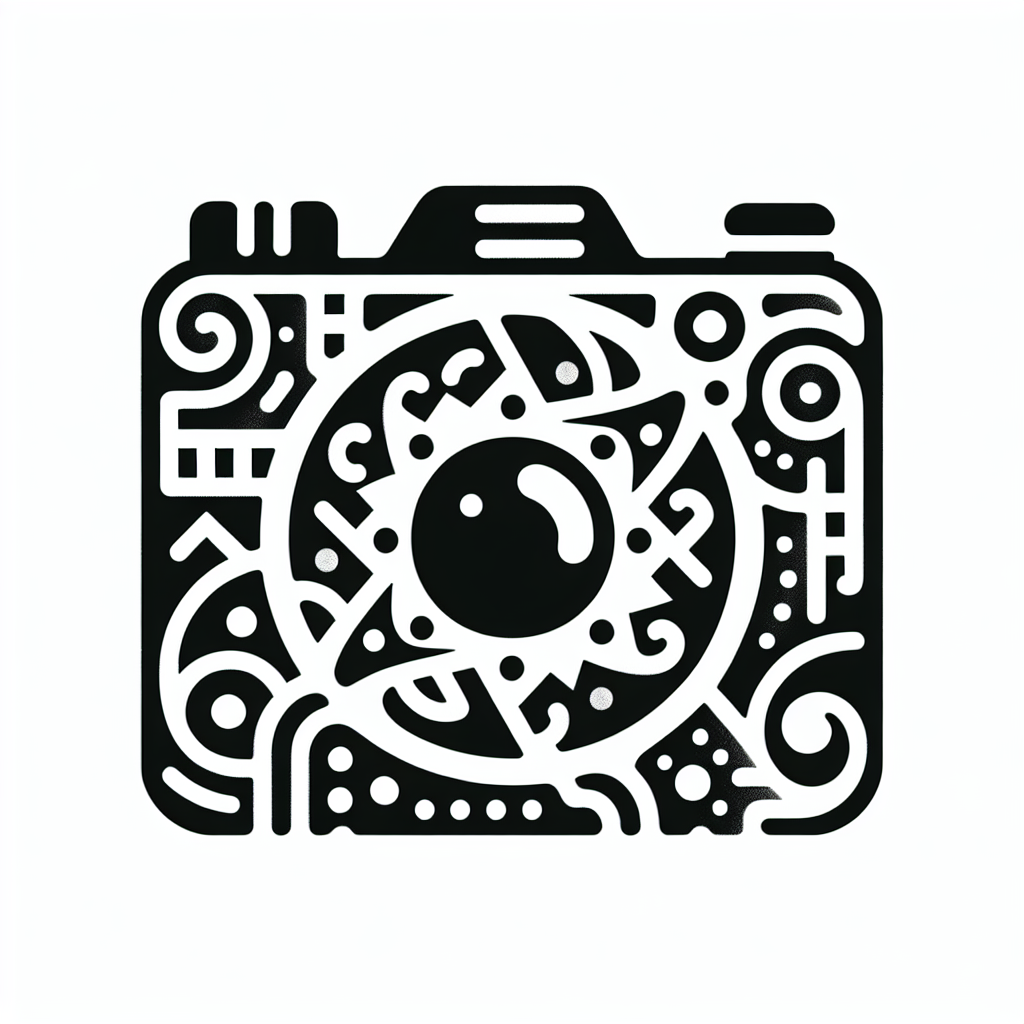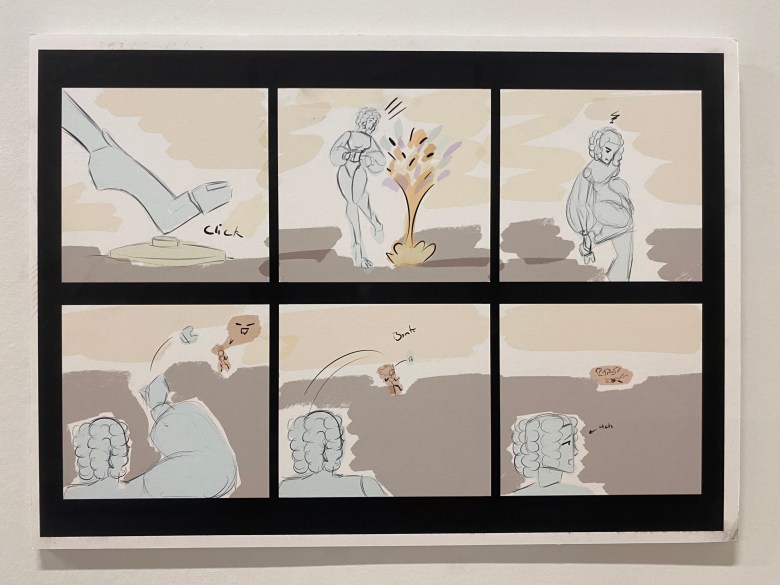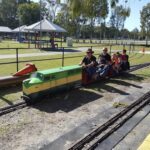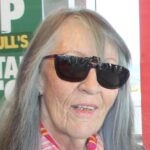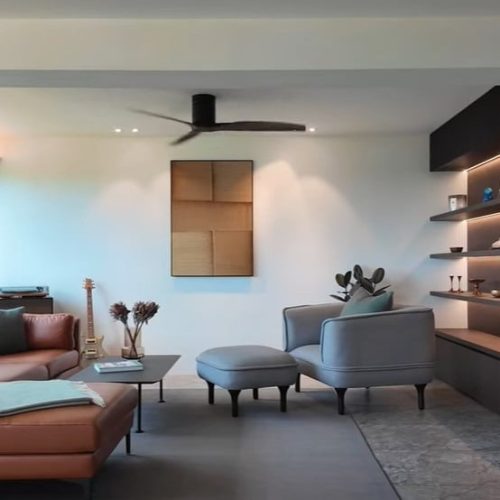
The sudden and dubious closure of the Star Store building last August, several weeks before school was about to commence for students of UMD’s College of Visual and Performing Arts, will be long remembered for the perceived betrayal of the administrators, anxious to shepherd their charges into a defunct Bed Bath & Beyond store in a strip mall.
Art studios were urgently cleared out, dumpsters were filled, and students and the community were baffled and angered. The ramifications of the shutout still reverberate.
The Star Store had a grand main gallery and a series of ancillary exhibition spaces, and many graduate students anxiously looked forward to showing their paintings, sculpture, ceramics, drawings, fiber art and more in those locations.
The Master of Fine Arts exhibitions held at the beautifully restored building was a highlight of the academic careers of the participants.
But alas, for the first time, the MFA exhibition will be held off-campus, not even at the Campus Gallery in the CVPA building in Dartmouth. Certainly, there was an urge to find a way to exhibit downtown, and the MFA exhibition will, in part, be on display in the People’s Gallery at the New Bedford Art Museum.
One of the aforementioned UMD administrators is Lawrence Jenkens, Dean of the CVPA. He is also the chair of the board of trustees at NBAM. An attempt to make amends, perhaps? Or it may just be coincidence, I suppose.
There is a concurrent exhibition for this year’s five MFA candidates at The Ignition Space in Fall River, operated by the Fall River Arts & Culture Coalition (FRAAC.)
The five students are Ruth Douzinas, Zeph Luck, Matthew Napoli, Fallon Keiko Navarro and Darley Ortiz Garcia. All are doing impressive, thought-provoking, high-quality work. They all exhibit in both venues (“just 15 miles apart,” according to the catalog.)
The dual locations may expand the potential for more viewers to see the work, but there is a logistical flaw for those hoping to see all the works of any of the artists in one environment where they speak to each and the connections are clear. And it is hardly convenient.
But it is disappointing to see that there are only five. I have written about the MFA exhibitions for a long time and in some years, the reviews were split over two consecutive weeks in order to give each grad student the attention I thought was deserved after all their hard work.
In 2013, there were more than three times the amount that there are presently. In 2018, there were less than a dozen. Last year, there were four.
But why? Across academia, the reasons are complex but include a dwindling pool of high school graduates, rising tuition and fees, and the long lingering effects of pandemic culture.
In the case of the CVPA in particular, there has been a failure to replace faculty lost to attrition and to adequately maintain equipment and the physical plants. Some faculty members feel disenfranchised.
The bedrock principles of studio arts are downplayed in favor of those done at the computer screen, which ultimately could be done remotely. And most importantly, there has been a critical failure in recruiting students. At risk of sounding pessimistic, I fear for the future of the MFA program.
But I digress. Now, on to our regularly scheduled review, to be presented in alphabetical order.



First up is Ruth Douzinas, a New York based artist with a BA in Environmental Science from Dartmouth College and an MS in Environmental Engineering from Stanford. With a concentration in ceramics, she eschews traditional functional clayworks — vases, vessels and the like — at least within the context of the exhibitions in either space.
Instead, her work deep dives into sculpture and site-specific installation. A particularly striking wall-mounted piece at the Art Museum is “Blue Pallet l,” which is more or less exactly what it sounds like. Constructed of seven sky-blue horizontal clay planks, atop three vertical cross pieces, it is riddled with tiny holes and indentations and seams as one might see on any ordinary shipping pallet.
A shorter, slightly paler section of plank is diagonally secured to it with wire, and that additional element completes the composition perfectly.
Over at the Ignition Space, Douzinas displays other pallets, including one called “Lichen Pallet l” which replicates nature’s sometimes successful reclamation of humanity’s debris. Another is made up of nothing but single-use plastic bottles.
She subverts our expectations by reimagining other overlooked man-made objects, including cinder block and segments of shattered old Greek columns. She creates clay versions and assembles the components into striking sculptural installations.

Zeph Luck, who grew up in Virginia and North Carolina, is a painter, printmaker and draftsman who received a BFA from the University of North Carolina at Greensboro. The flora and fauna of the ocean and mountains of his youth are the inspiration for his work.
Between the two locations, Luck exhibits acrylic gouache painting, graphite drawings and most dramatically, “digital pattern repeat prints” on large scale (55 X 107 inches) segments of fabric, suspended from the ceiling.
His complex patterned compositions of fish, plants and fungi, created through the use of repetition, overlapping, obscuring, and redefining are deeply engaging, particularly “Atlantic Cod” (at the Ignition Space) with its unexpected color choices.
Matthew Napoli is a Providence-based painter who works primarily with oil paint. He received his bachelor’s degree from the Maryland Institute College of Art. His work is derived from the natural world but he also has created a mysterious personal mythology that includes latex gloves, a baby bird, two geese tethered by a chain that goes down their throats and the color purple … lots of purple.

One of his paintings has the comically elongated title “Gingko biloba. I am growing trees in my guest room. I wanted to feel more connected to nature, so I bought plastic pots, plastic bags of soil and a plastic water can.” Napoli is charmingly self-deprecating with the name of the painting, embracing the irony of buying so much plastic in order to be closer to nature.
The painting itself (at the Ignition Space) features 14 sprouting plants in a circle as formidable as ancient Stonehenge in an eerily purple room.
At NBAM, Napoli’s “Does A Man Also Eat Himself, Also Contain Poison?” featuring a man from his shoulders down grasping both feet in his hands, while inches away a coral snake is swallowing its own tail. The serpent is a reference to the Ouroboros, an ancient Greek symbol representing the endless cycle of destruction and rebirth.
Fallon Keiko Navarro is a New Bedford-based ceramicist who received her BFA from Arizona State University, and a prominent student activist, which was a perfectly understandable reaction to the demise of the Star Store.
Navarro utilizes ceramics in a decidedly non-functional manner without abandoning the hallmarks of the medium. She references vases, dishes, pots and more and then denies them of their utilitarianism. Instead, they become objects of contemplation. She is about dualities: private/public, interior/exterior, emotional/physical, fragility/strength, and substance/spirit.


She embraces what might be considered traditionally feminine motifs: delicate budding florets, wedding cake tiers, little candies, girly pink things and then cleverly subverts them.
Her “Somewhere In-Between” is a prime example. With the virginal white and pink flourishes and nods to domesticity — a tureen, baskets, the antique table itself — it is all of an era and a frame of mind seen through a lens of distortion. And it is lovely.
Darley Ortiz Garcia of Rhode Island is pursuing her MFA in digital media. Her undergraduate degree in graphic design and animation and game art was from UMD. She is a storyteller who has created a fantasy world called “Lernel.” It consists of original ecosystems, cultures, characters, languages and traditions that are particular to her work-in-progress.

She is represented by a series of digital drawings and 3D model renderings that have a very Disney-esque vibe to them.
All in all, the MFA 2024 Thesis Exhibition at both locations are fine showcases for all five exceptional artists. But it would’ve been wonderful if they could have actually been shown in the Star Store, the space they had been implicitly promised. And deserved.
And perhaps someone from the university could send someone down to the building to scrape the CVPA vinyl off the glass?
The 2024 MFA Thesis Exhibition is up in both spaces until May 17. The New Bedford Art Museum is located at 608 Pleasant St. The Ignition Space is located at 44 Troy St., Fall River.
Don Wilkinson has been writing art reviews, artist profiles and cultural commentary on the South Coast for over a decade. He has been published in local newspapers and regional art magazines. He is a graduate of the Swain School of Design and the CVPA at UMass Dartmouth. Email him at [email protected]
MORE CHASING THE MUSE
The post MFA exhibition impressive, thought provoking … but sadly not at Star Store appeared first on The New Bedford Light.
